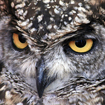Early bird or night owl - Special Days
Elementary level
Materials
Main Aims
-
To provide practice of language used for phrases for special days in the context of holidays.
Subsidiary Aims
-
To provide a vocabulary review of days and months, listeining for details and speaking practice in the context of holidays
Procedure (43-59 minutes)
Project a set of five pictures on the board to get the students talking and try to elicit the idea of special days/occasions. CCQ if needed, asking "Are those regular/normal days or are they different? How/Why?". Show the students some birthday cards and try to elicit the word "card" from them. CCQ to make sure they understand the meaning. "What do we use cards for? Do we give them every day or on a special occasion?"
Keep the photos on the board and have the students do a matching exercise, where they match the photos with the special occasion and the phrases that we use on those days. Put the answers on the board and do a WC FB. Project the phrases on the board and CCQ to check if the meaning is clear. "Do we use happy birthday when a baby is born?' "No, we don't!" "Do we say happy anniversary at a wedding?" "No, we don't" Do we say Happy New Year on someone's birthday?""No we don't". Drill pronunciation of the TL using choral drilling. Have student listen to the audio and instruct them to respond with the appropriate phrase. If they are having trouble, answer the first one yourself and then have the W/C repeat after you. Divide the students into 3 groups and give them a set of cut-ups with the months written on them, but the letters are in the wrong order. The students need to unscramble each word, write it at the back of the paper and stick it in the board in the correct order. Do January together so that they understand the activity. Instruct the students to move fast because it is a competition. Once the months are all on the board, do a W/C FB and ask the students if they are in the correct order. Drill the pronunciation for each month, but put special emphasis on February, June, July, August. Put today's day and date on the board and elicit the difference from the students. Spread HO#2 and instruct the students to match the dates with the words. Do a quick peer check and then discuss the use of the letters st, nd, rd and th when we write dates using numbers.
Set up the room for an information gap activity. Give the ss Student A HO#2a and instruct the students to share one HO per two students. Pretend that you are Student B and you need to find out the missing information. Elicit the information from the students. Share HO#2b to the remaining students and instruct them to sit back to back. Tell them to ask each-other questions and find out the missing information. Have them check in pairs to see if they got the information right.
Write your name at the center of the board and four important dates for you. Elicit questions from the students to find out the importance of the dates. Hand them a blank piece of paper and tell them to write four important dates for them. The students then walk around the classroom and ask each-other questions to find out the importance of those dates.
During the communicative speaking activities monitor the students unobtrusi ely and write down any errors with the target language that you hear. Put 3-5

